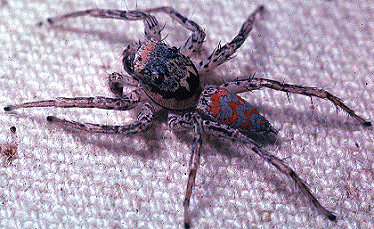
HOME
 HOME |
|
All spiders have fangs and most kinds have poison glands. They use their fangs and poison glands to capture their food. A spider's bite can kill insects and other small animals.
Spiders are helpful to people because they eat harmful insects. They eat grasshoppers and locusts which destroy crops. Spiders also eat flies and mosquitoes which carry diseases. Spiders feed mostly on insects but some of them catch and eat tadpoles, small frogs, small fish and mice.

Most females are larger and stronger than the males and occasionally they eat males. The life span of most spiders is a single season, so they rely on eggs to keep the species going. In warm regions, certain spiders seem to live more than a single year. In fact some tarantulas in captivity have survived for as long as 20 years!
There are more than 30,000 kinds of spiders that we know about, but scientists think there might be even more. Some are smaller than than the head of a pin but some are larger than a person's hand. One kind of spider, a South American tarantula is measured at 25 centimetres wide, but that is with its legs stretched out.
Spiders can live anywhere they can find food like fields, woods, swamps, caves and deserts.